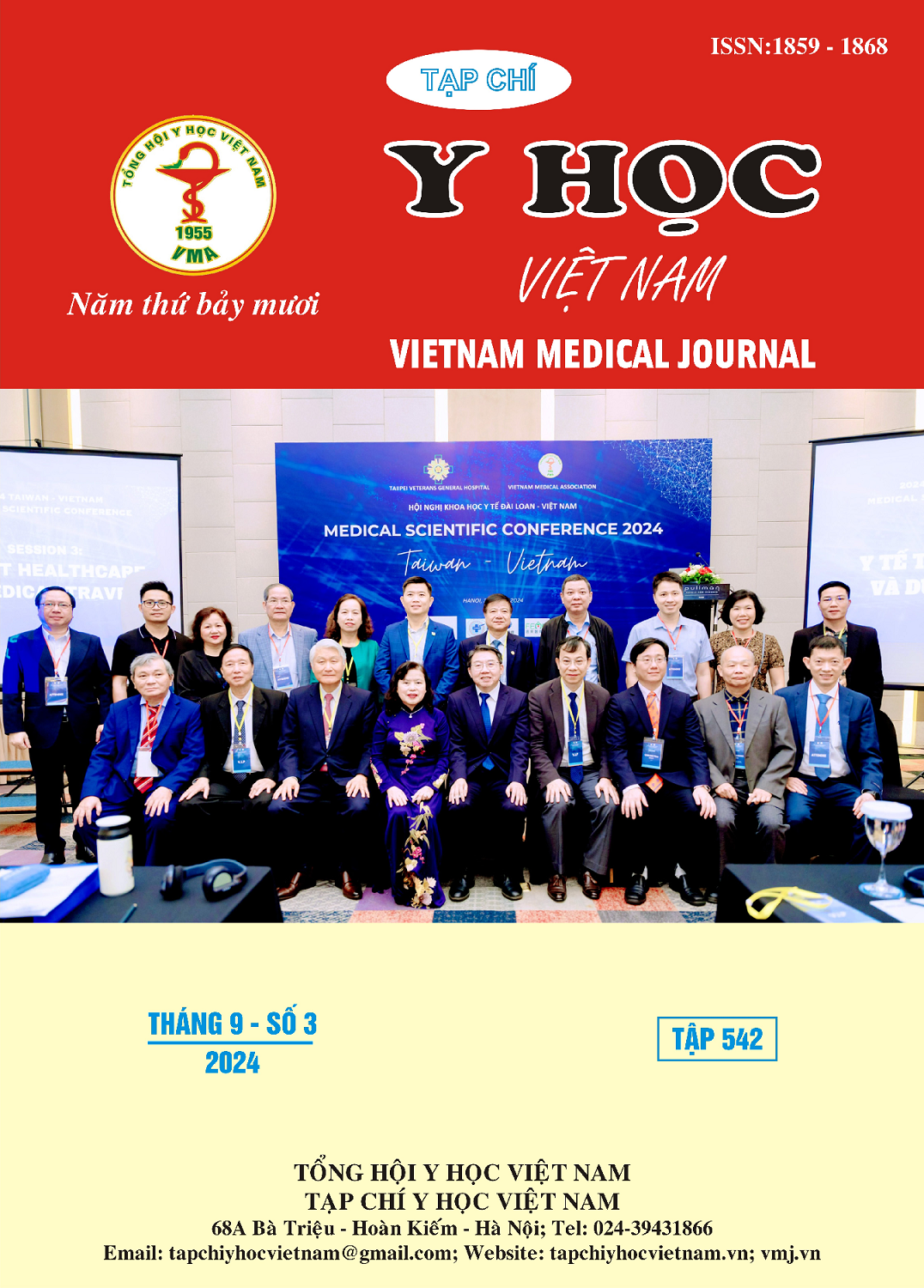THE FIRST EVALUATION OF RESULTS OF TREATMENT INGUINAL HERNIA BY LAPAROSCOPIC TRANSABDOMINAL PREPERITONEAL (TAPP) REPAIR AT CHO RAY HOSPITAL
Main Article Content
Abstract
Background: Inguinal hernia is one of the commonest surgical diseases and there are many different techniques applied for treatment. The laparoscopic transabdominal preperitoneal (TAPP) repair allows a better view of the inguinal anatomy, evaluation of opposite side, is beneficial for recurrent hernia, resolve combined peritoneal diseases and has a short training time as well. Aim: To evaluate outcomes of the laparoscopic transabdominal preperitoneal for treatment inguinal hernia. Patients and methods: A prospective study was carried in 37 cases with inguinal hernia that have been treated by laparoscopic transabdominal preperitoneal (TAPP) repair in Cho Ray hospital from 06/2023 to 06/2024. Results: The mean age was 56.25 ± 19.06 years old. 83,8% were male. 86,5% of hernia were symptomatic, 13,5% of hernia were complicated. 24,3% of hernia were recurrence. 75,7% of hernia were unilateral, 8,1% were bilateral, 16,2% were occult. 91,9% would perform an unilateral TAPP repair, 8,1% bilateral TAPP repair. The mean operative time was 58.62 ± 13.05 minutes for unilateral TAPP, 85,67 ± 4,92 minutes for bilateral TAPP. The mean VAS 24h postoperative was 3.53 ± 0.56. Regarding postoperative complications, inguinal seroma was detected in 21,6% of cases. The rate of recurrence after surgery was 2.7% in one case. The mean postoperative hospital stay was 2.41 ± 1.25 days. Conclusion: TAPP is a safe and feasible procedure, allows evaluation of opposite side and resolve combined peritoneal diseases.
Article Details
Keywords
Inguinal hernia, laparoscopic, transabdominal preperitoneal (TAPP).
References
2. Fitzgibbons RJ, Ramanan B, Arya S, Turner AS, Li X, Gibbs OJ, Reda JD. Long-term results of a randomized controlled trial of a nonoperative strat- egy (watchful waiting) for men with minimally symptomatic inguinal hernias. Ann Surg. 2013;258(3):508–515.
3. Pohnan R, Rozwadowski. Advantages and disadvantages of transabdominal preperitoneal approach and total extraperitoneal. Military Medical Science Letters.2013:82(1):25-31.
4. International guidelines for groin hernia management. Hernia. 2018;22:1–165.
5. Litwin EMD, Pham NQ, Oleniuk HF, Kluftinger MA, Rossi L. Symposium on the management of inguinal hernias: 3. Laparoscopic groin hernia surgery: the TAPP procedure. Can J Surg. 1997;40:192-198.
6. Trịnh Văn Thảo. Nghiên cứu ứng dụng phẩu thuật nội soi đặt mảnh ghép hoàn toàn ngoài phúc mạc trong điều trị thoát vị bẹn. Luận án tiến sĩ Y học, Học Viện Quân Y. 2010.
7. Thammavone S, Nguyễn Hoài Bắc, Trần Ngọc Dũng, Trần Hiếu Học, Thammavone S, Sengkhamyong K. Đánh giá kết quả điều trị thoát vị bẹn bằng phẫu thuật nội soi đặt lưới ngoài phúc mạc tại bệnh viện đại học Y Hà Nội. Tạp chí y học Việt Nam. 2023;528:300-308.
8. Phan Đình Tuấn Dũng. Nghiên cứu ứng dụng phẫu thuật nội soi ngoài phúc mạc với tấm lưới nhân tạo 2D và 3D trong điều trị thoát vị bẹn trực tiếp. Luận án tiến sĩ Y học, Trường Đại học Y Dược Huế. 2017.
9. Lương Đức Anh. Đánh giá kết quả điều trị thoát vị bẹn ở người lớn bằng phẫu thuật nội soi đường trước phúc mạc tại bệnh viện E. Luận văn thạc sĩ y học, Trường Đại học Y Hà Nội. 2019.


